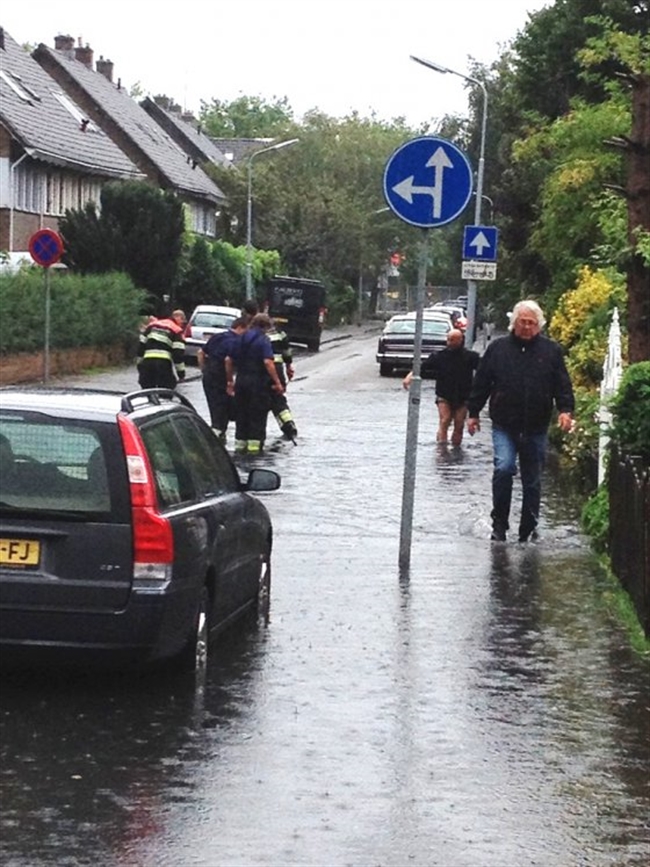Tailor-Made Advice on Pluvial Flooding in Zwanenburg
This project is an instance of garnering sympathy and collaboration among residents who are severely hit by pluvial flooding. One of the Zwanenburg neighbourhoods is situated significantly lower than the surrounding area. Extreme downpours, such as in July 2014, leave the streets inundated. The measures that are being taken in the sewage system, and dealing with surface water and on public ground cannot entirely remove the risk of water entering the houses in this neighbourhood. For that reason, residents need to prepare for a water level of several tens of centimetres high against their house. We have set them up with recommendations tailored to each individual house. This has made the residents more sympathetic towards the situation.

Results
The project comprises a two-track approach: tackling public ground (surface water, sewerage, road design), and measures for indoors. The point of departure is the situation after the implementation of potential measures on public ground. In this situation, a downpour occurring with a frequency of once every 10 years is still expected to cause a water level elevation of tens of centimeters.
Residents have been provided with tailor-made advice in order to help them prepare for such situations in the future. This advice comprises an inspection of the property, an indicative height measurement, and an elaboration in an individual advisory report tailored to the property. The advisory report gives the home owners more insight into the way in which water enters their homes: not only through doors and windows, but also through, for example, openings in the walls and through the brickwork. Each of the potential ways of entry is explained separately in the report.
It is important to gain a realistic picture of the options for keeping water out. In the summer of 2014, the water remained up against the walls for several hours. Under such circumstances, water will always enter the house, because existing standard outside walls are not water-proof. Some of the residents have attempted to make their outside walls water-proof by filling up all the openings in the walls. This also closes off any vents in the wall as well as the crawl space. Images and sketches in the individual advisory reports explain the importance of ventilation and why structurally filling up all the vents will cause dampness issues.
Furthermore, the report outlines practical matters, such as the combined implementation of measures and joint purchasing. It also pays attention to the organisation of temporary emergency measures, for example, what to do when you are away on a holiday?
The result is a tailor-made package of relatively simple measures that reduce the entry of water into the property to a controllable level. This personal attention, including the house inspections and the explanations in the reports, has made the residents more sympathetic to the situation, and to the municipal approach.
Contact person
Bilge Evin
Municipality of Haarlemmermeer
+31(0)23-567 44 02
b.evin@haarlemmermeer.nl
